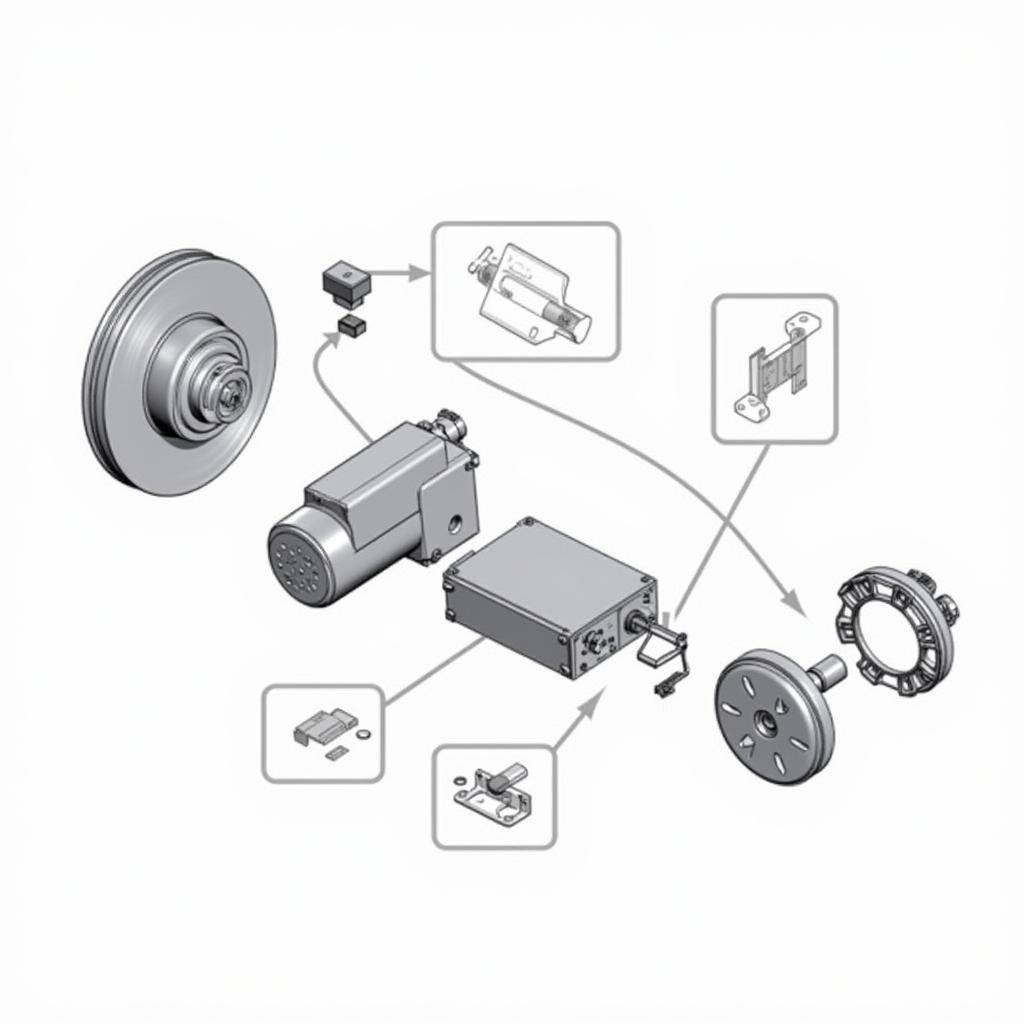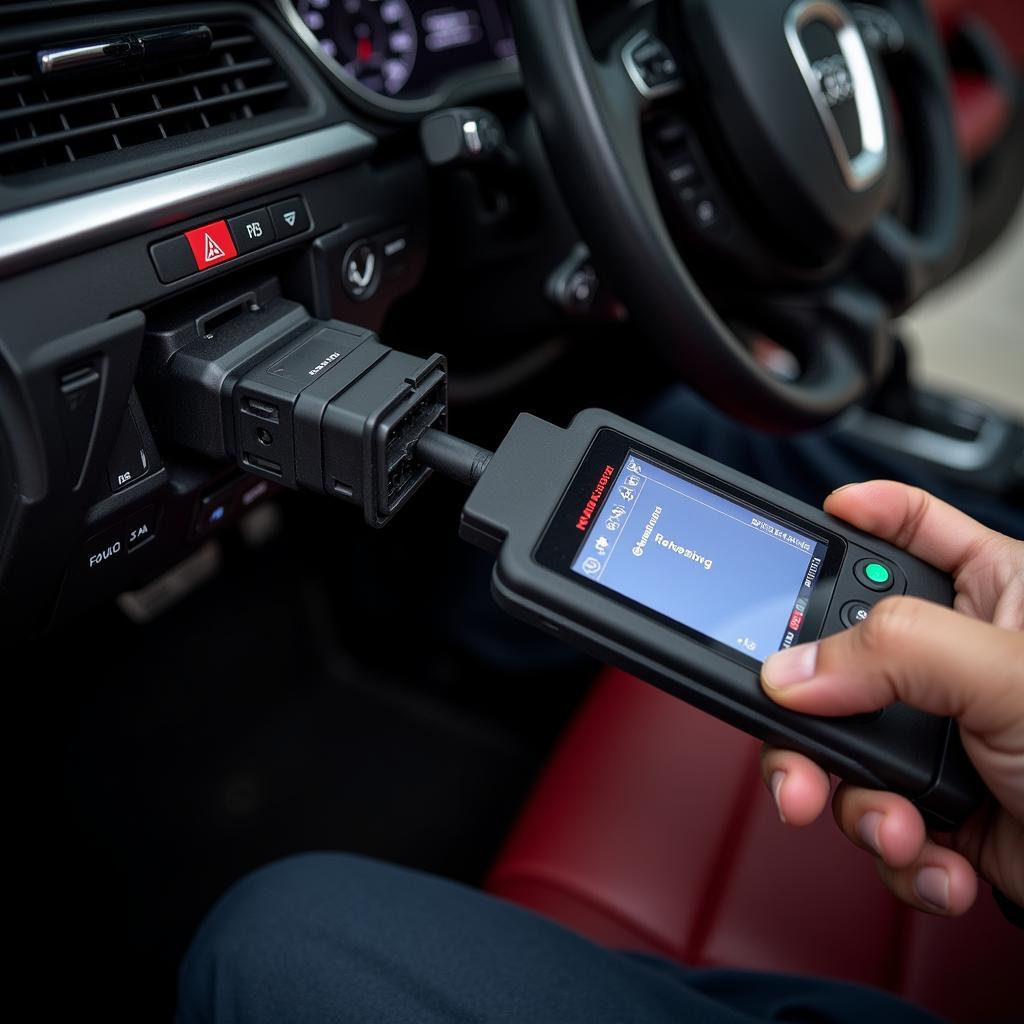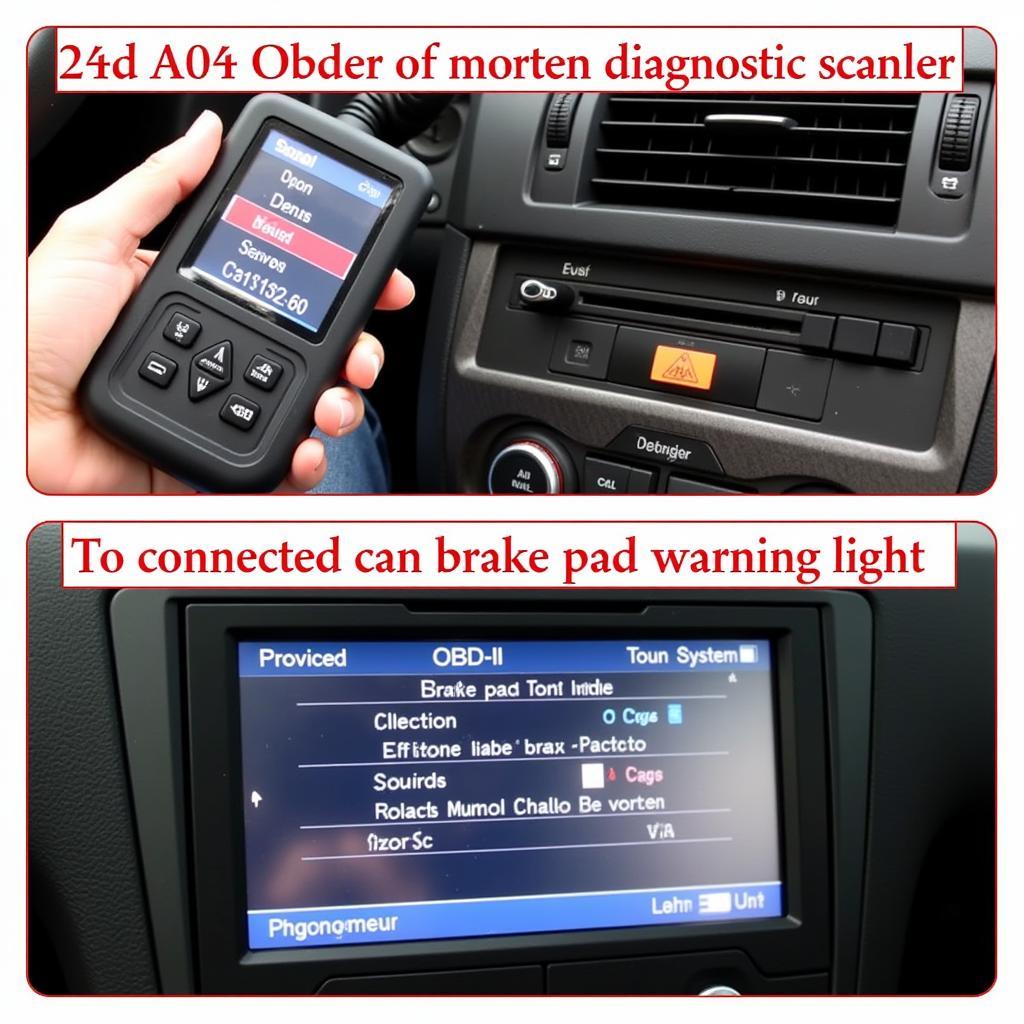The Audi A7 is a marvel of engineering, known for its luxurious feel and sophisticated technology. However, even the most advanced vehicles can encounter issues, and the dreaded “brake pad wear” warning light is a common sight for many A7 owners. While this warning often indicates worn brake pads, it can sometimes be triggered by a less obvious culprit: the Electronic Electromechanical Parking Brake (EEBPV) system. This article will delve into the potential causes of the “audi a7 brake pad eepbv warning” and guide you through the diagnostic and repair process.
Understanding the EEBPV System in Your Audi A7
 Audi A7 EEBPV System
Audi A7 EEBPV System
The EEBPV system in your Audi A7 is a critical safety feature that replaces the traditional handbrake lever with an electronically controlled system. When activated, the EEBPV system uses an electric motor to engage the rear brake calipers, securing the vehicle. This system offers several advantages over traditional parking brakes, including:
- Increased Convenience: Engaging and disengaging the parking brake is as simple as pressing a button.
- Enhanced Safety: The system automatically engages if the vehicle is switched off or if it senses a rollback on an incline.
- Improved Hill-Start Assist: The EEBPV system works in conjunction with the hill-start assist feature, preventing rollback when starting on a slope.
Why is My Audi A7 Displaying a Brake Pad Warning?
While the brake pad wear warning is often triggered by worn brake pads, it can also indicate an issue with the EEBPV system. Here are the most common causes of an “audi a7 brake pad eepbv warning”:
- Worn Brake Pads: This is the most straightforward cause. As your brake pads wear down, sensors within the brake system trigger a warning light on the dashboard.
- Faulty Brake Pad Wear Sensor: Like any sensor, the brake pad wear sensor itself can malfunction, sending a false signal to the car’s computer.
- EEBPV Control Module Issues: The EEBPV system is controlled by a dedicated module that can experience electrical or software glitches, leading to a warning light.
- Wiring Harness Problems: The wiring harness connecting the EEBPV system components can become damaged or corroded, disrupting communication and triggering a warning.
- Motor or Actuator Malfunction: Mechanical issues within the EEBPV motor or actuator can also lead to a brake pad warning.
Diagnosing the “Audi A7 Brake Pad EEBPV Warning”
 Audi A7 Diagnostic Scan
Audi A7 Diagnostic Scan
Accurately diagnosing the root cause of the “audi a7 brake pad eepbv warning” requires specialized equipment and expertise. Here’s where remote diagnostics and software solutions come into play:
-
Remote Diagnostics: Connecting your Audi A7 to a remote diagnostics platform allows experienced technicians to analyze the vehicle’s fault codes and data logs in real-time. This approach offers a quick and convenient initial assessment of the problem.
-
Software Updates and Programming: In many cases, the “audi a7 brake pad eepbv warning” can be resolved with software updates or reprogramming of the EEBPV control module. Remote software solutions enable technicians to perform these updates wirelessly, saving you time and potentially costly trips to the dealership.
Addressing the Root Cause: Repair and Maintenance Tips
Once the cause of the “audi a7 brake pad eepbv warning” has been identified, the appropriate repair measures can be taken. These may include:
- Brake Pad Replacement: If your brake pads are worn, they need to be replaced immediately.
- Sensor Replacement: A faulty brake pad wear sensor requires replacement to ensure accurate readings and prevent future false warnings.
- Control Module Repair or Replacement: Issues with the EEBPV control module might necessitate repair or replacement, often involving software updates or component-level repairs.
- Wiring Harness Inspection and Repair: Damaged or corroded wires within the EEBPV system’s wiring harness need to be repaired or replaced to restore proper communication.
- Motor or Actuator Repair or Replacement: Mechanical problems with the EEBPV motor or actuator often require repair or replacement to ensure optimal performance.
Expert Insight: “Regular maintenance is crucial for preventing EEBPV system issues,” says John Miller, a veteran automotive electrician specializing in European vehicles. “Inspecting your brake pads and having the system checked by a qualified technician during regular service appointments can prevent costly repairs down the line.”
Conclusion: Keeping Your Audi A7 Safe and Reliable
The “audi a7 brake pad eepbv warning” can be concerning, but understanding its potential causes and utilizing advanced diagnostic and repair solutions can help you address the issue efficiently. Whether it’s worn brake pads, a faulty sensor, or a more complex electronic problem, remote diagnostics and software solutions offer a convenient and effective way to diagnose and repair your Audi A7’s EEBPV system. Remember, regular maintenance and timely repairs are essential for ensuring the safety and reliability of your vehicle.
FAQs:
1. How often should I replace my Audi A7’s brake pads?
Brake pad lifespan varies depending on driving habits and conditions. However, it’s generally recommended to have them inspected every 10,000 miles and replaced as needed.
2. Can I continue driving with the “audi a7 brake pad eepbv warning” on?
While the EEBPV system might still function to some extent with a warning light on, it’s crucial to address the issue immediately. Continuing to drive with a potential brake system problem compromises your safety.
3. Is it necessary to take my Audi A7 to a dealership for EEBPV repairs?
While dealerships have access to specialized tools and expertise, qualified independent repair shops equipped with remote diagnostic capabilities can also effectively address EEBPV system issues.
4. How can I prevent future EEBPV system problems in my Audi A7?
Adhering to your Audi A7’s recommended maintenance schedule, including regular brake inspections, is crucial for preventing EEBPV system problems.
5. What is the average cost of repairing an EEBPV system issue?
Repair costs vary widely depending on the specific problem, the cost of parts, and labor rates. It’s always best to obtain multiple quotes from reputable repair shops.

